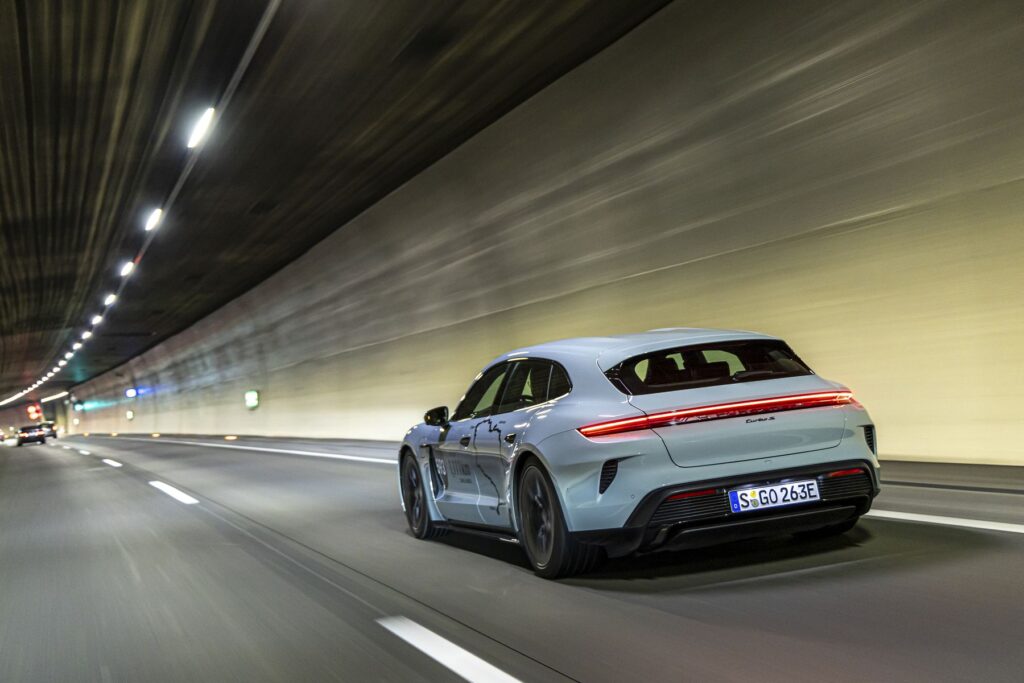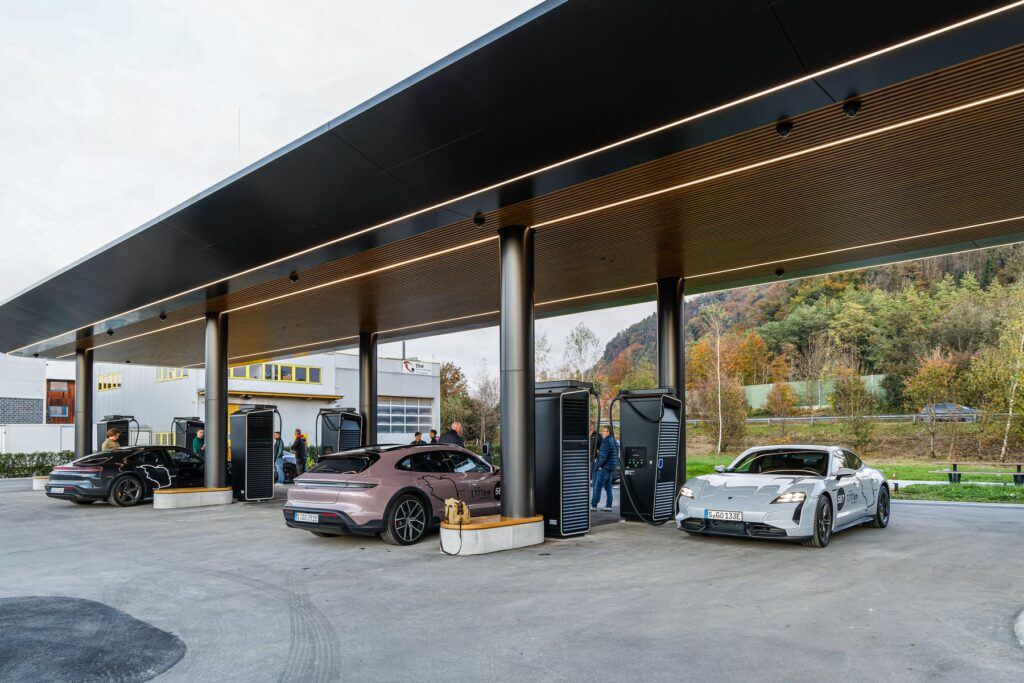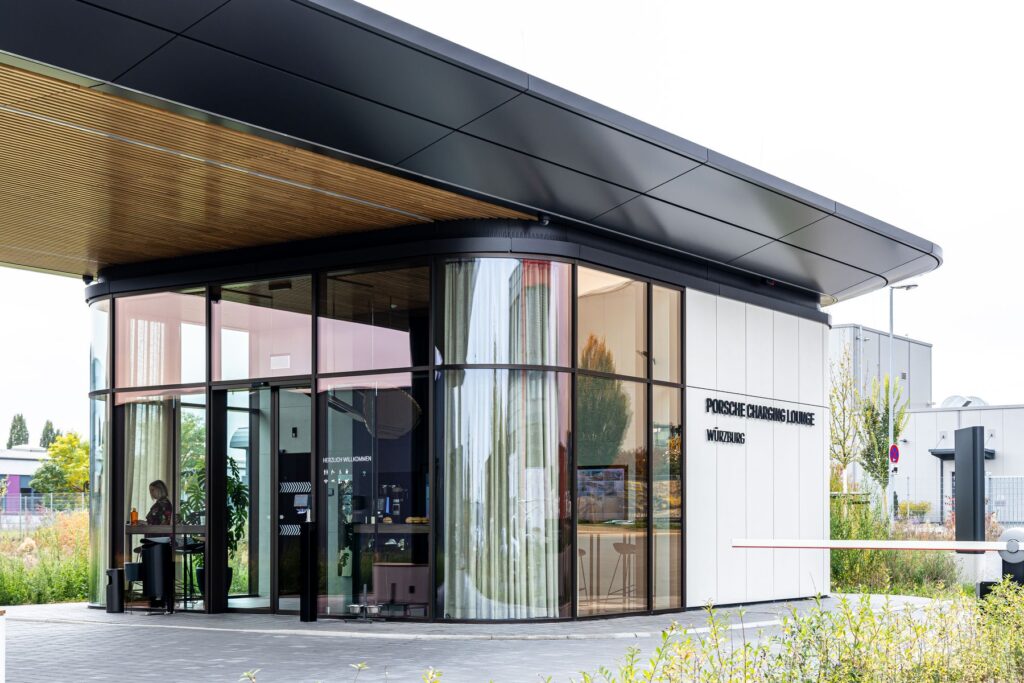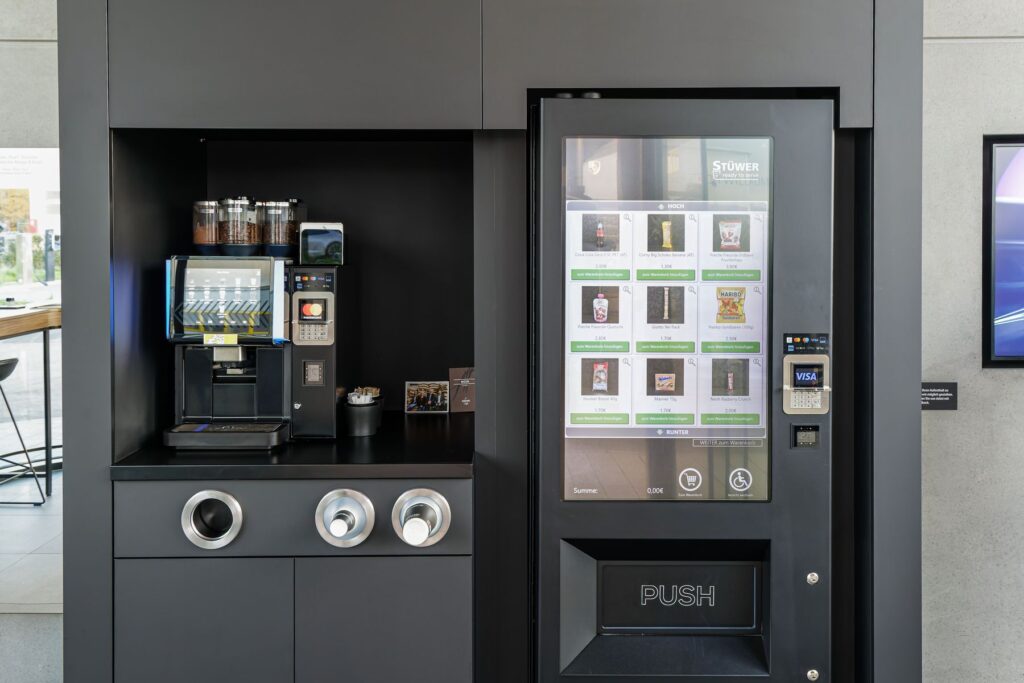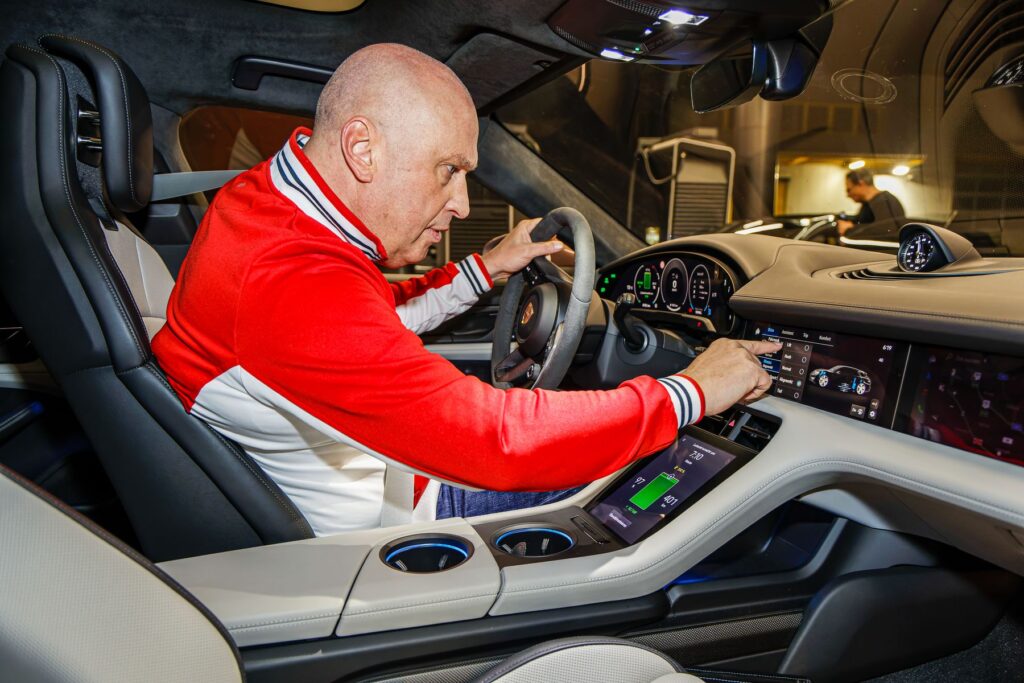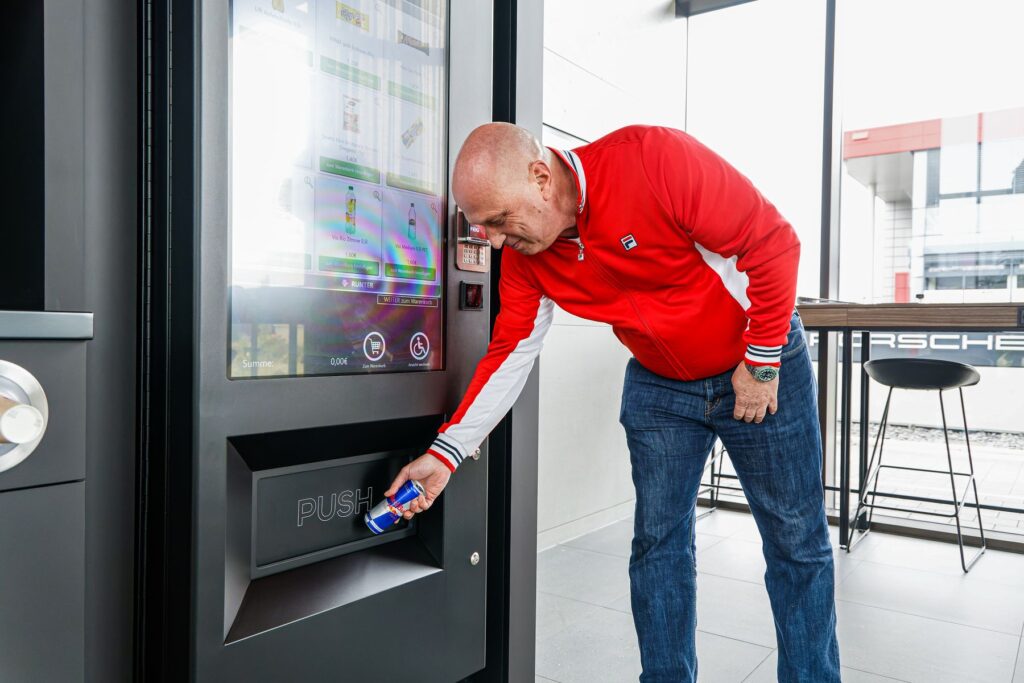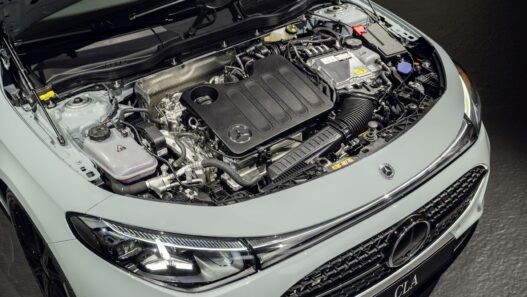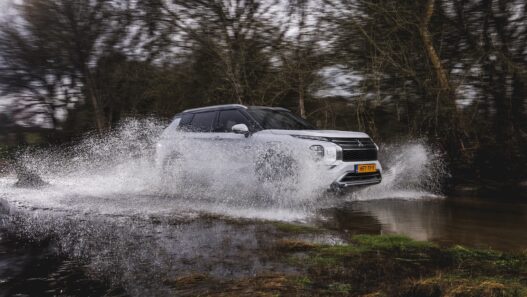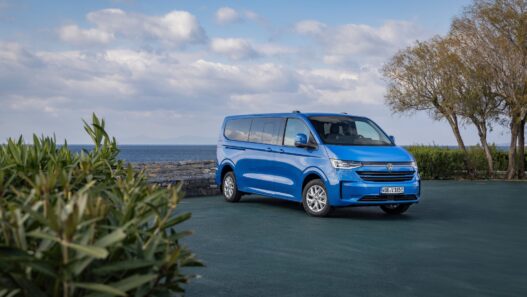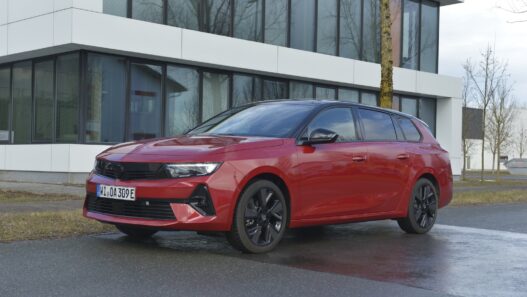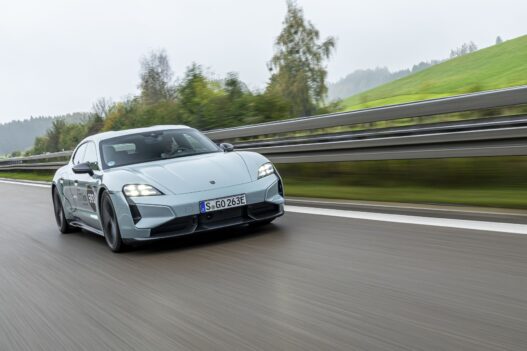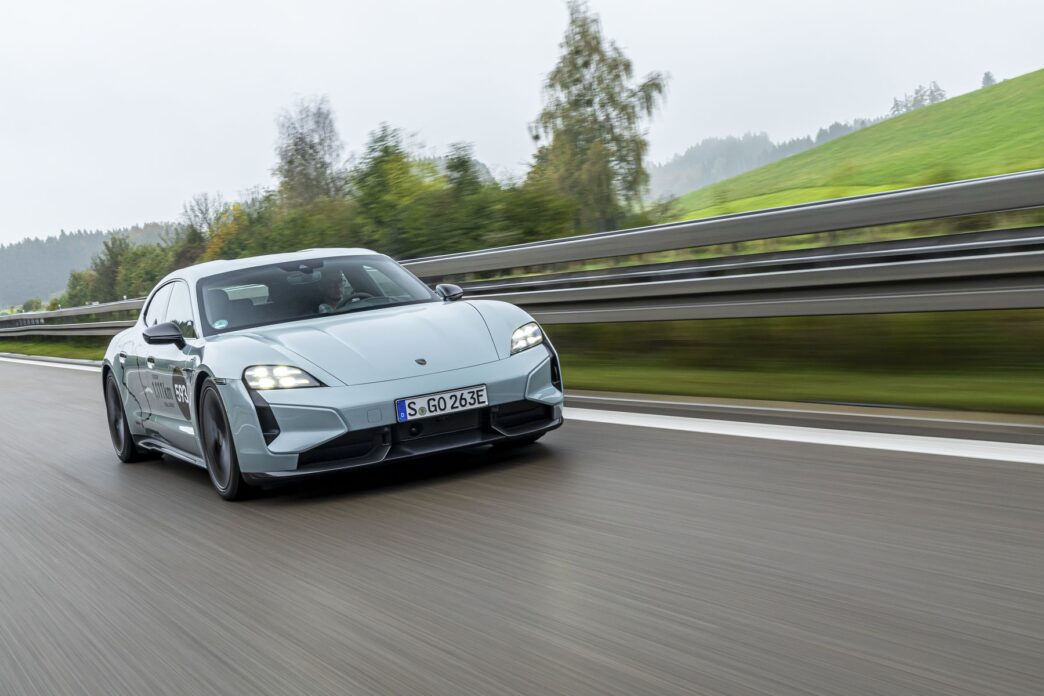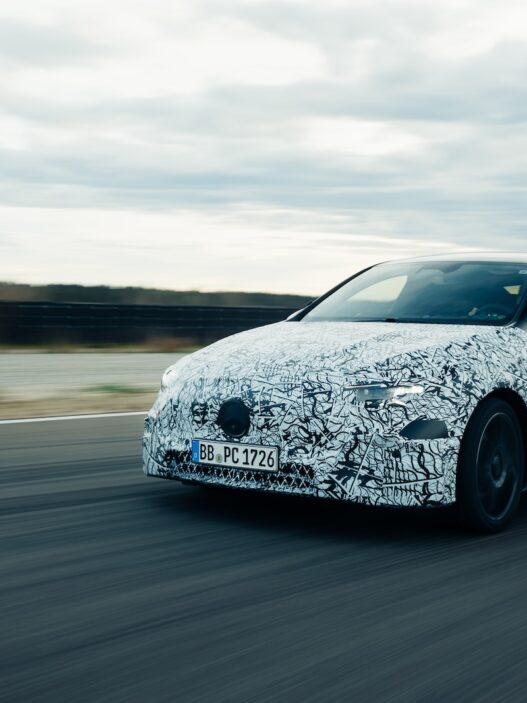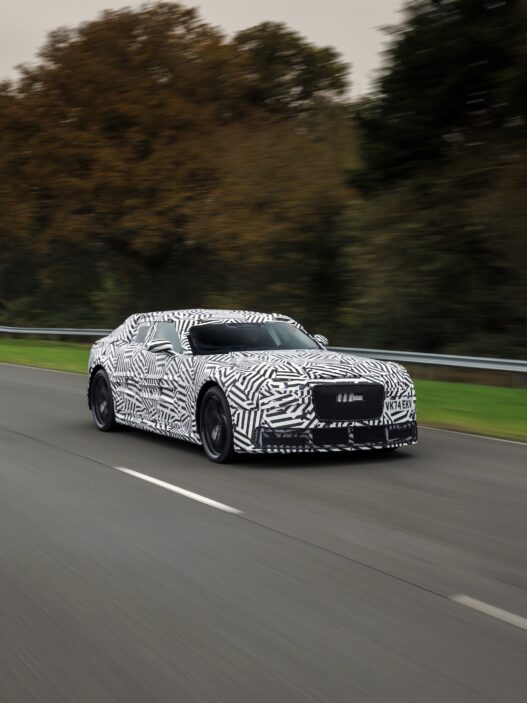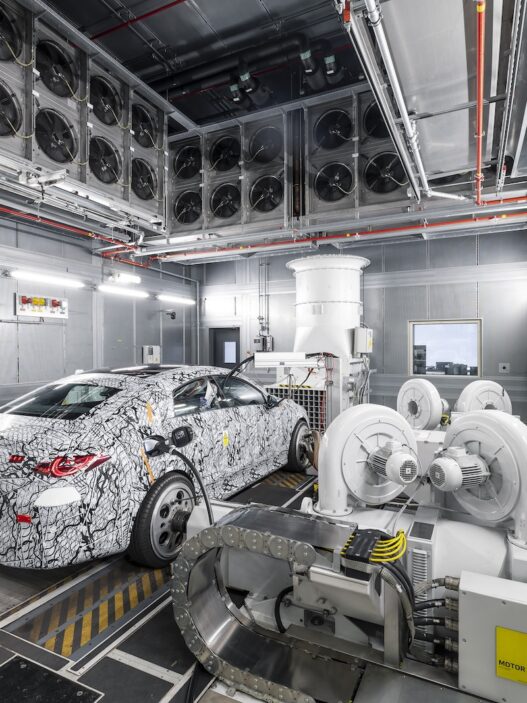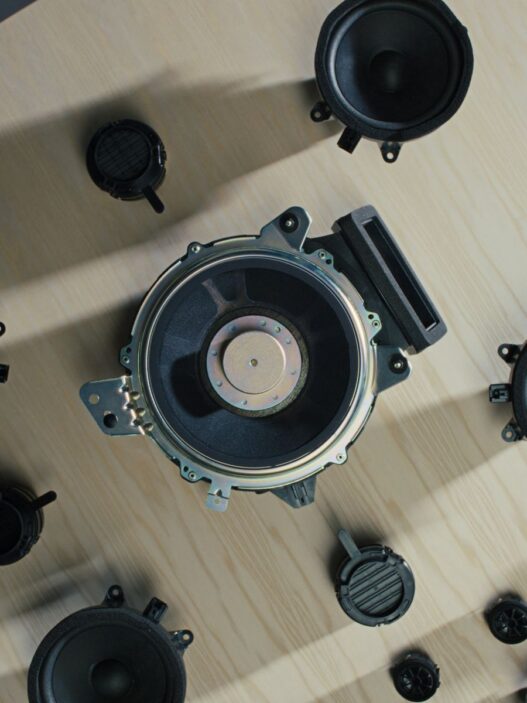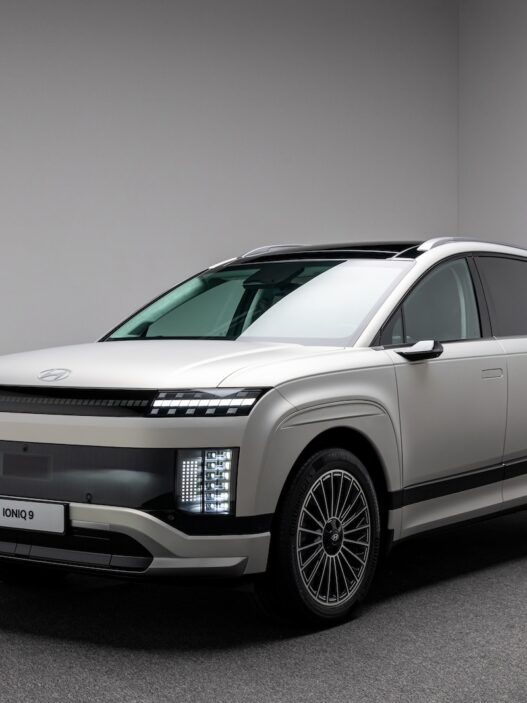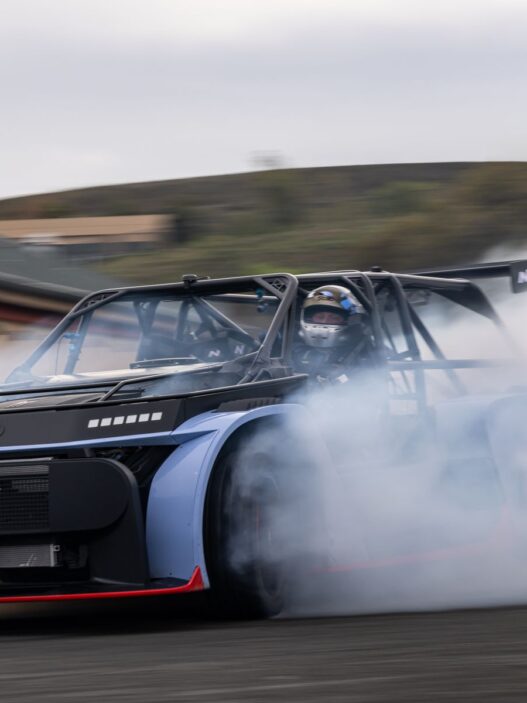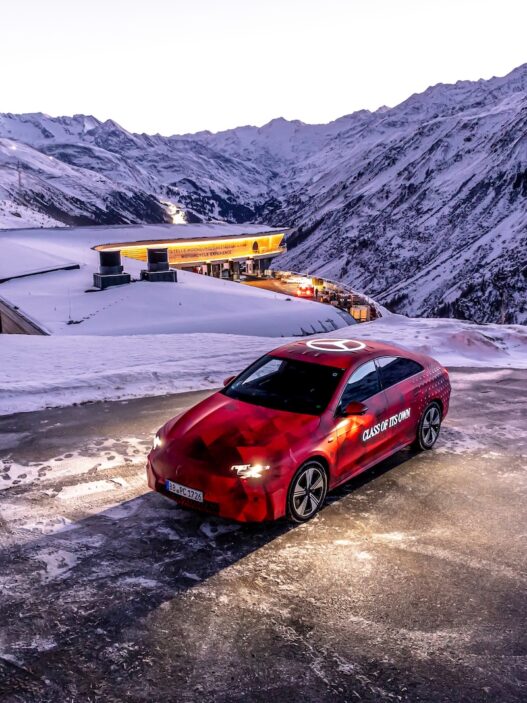A race against the clock highlighted just how fast the Porsche Taycan can charge, how precisely the software functions, and how well-suited this EV is for long distances.
The challenge was displayed in bold numbers on the Taycan Cross Turismo 4S: 1,111 kilometers. That’s the distance we aimed to cover as fast as possible. The rules required four charging stops: Bingen, Würzburg, Ingolstadt, and start/finish in Koblach, Austria. Quite the stretch to tackle in one go. Porsche stoked our competitive spirit: “The record is eleven hours.” Then they added, “Two teams ran out of charge and got stranded.”
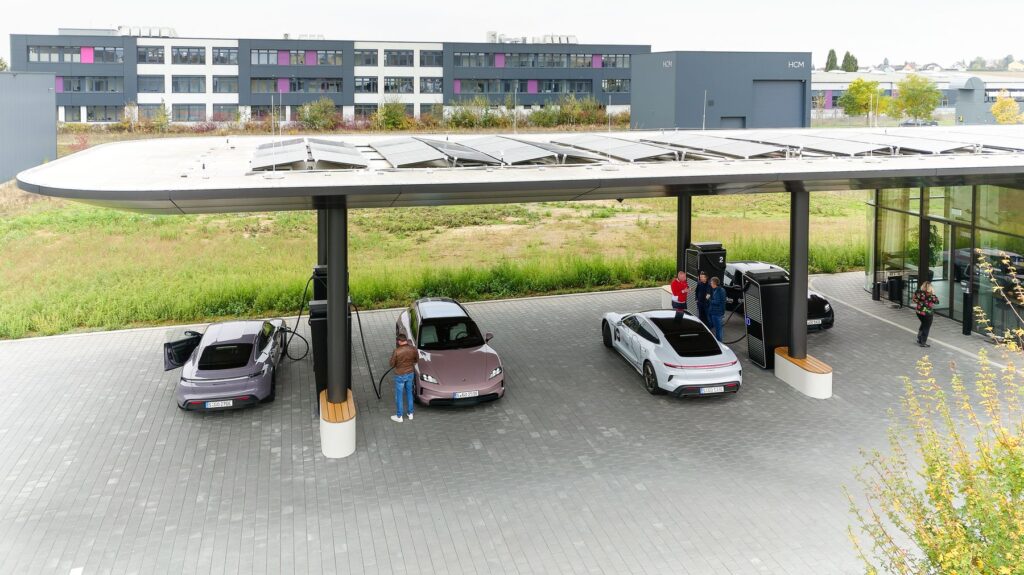
These words were etched in our minds as we climbed into the 440 kW (598 PS) electric powerhouse. Stranded! The primal fear of every EV driver. As we hit the start button, activating the Porsche’s electric power, the first destination was set: the charging station in Bingen. But the initial range estimate jolted us wide awake: the system predicted we’d arrive with a battery at -22%. Minus 22%! Suddenly, the fear of being the next team stranded by the roadside was very real.
The adventure began cautiously. We knew the estimate was based on the prior driver’s average speed and that the last two legs were faster than the first. But we kept it slow at first, creeping down the foggy autobahn at just 100 km/h as other competitors zoomed past us. Turning off the Taycan’s Charging Planner—since it suggested unsanctioned charging stops—we settled into the marathon pace.
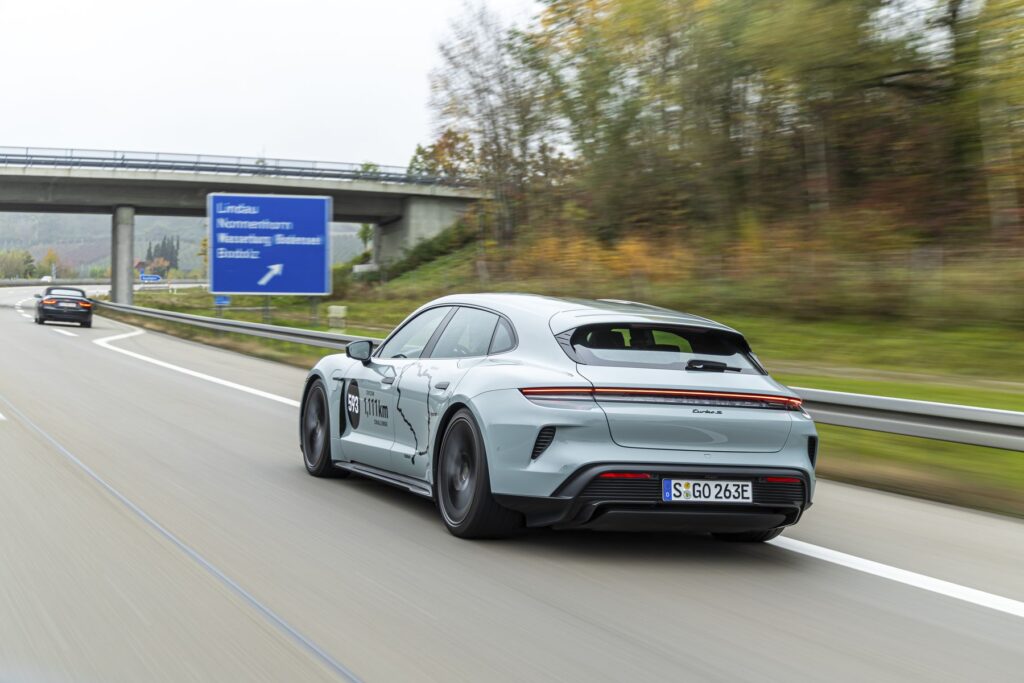
After a nerve-racking initial stretch, the negative percentage stayed in the double digits. But soon, our conservative speed paid off, and the estimate inched into positive territory. When we finally saw a 1% charge margin, we celebrated like we’d won the lottery. We cautiously accelerated, pushing the Taycan faster. Each stretch of speed dropped the battery estimate again, so we closely monitored the display, activating the battery conditioning to prep for a quick stop. By the time we reached Bingen, we were at a slim 2%.
Strategic Charging Stops
Bingen may not seem like a prime charging spot, but Porsche’s location strategy makes sense. Placing fast-charging stations along major routes caters perfectly to Taycan drivers. The charging stops are covered, complete with a comfortable lounge, drinks, and snacks—a far cry from the typical nondescript charger on the edge of a highway rest area.
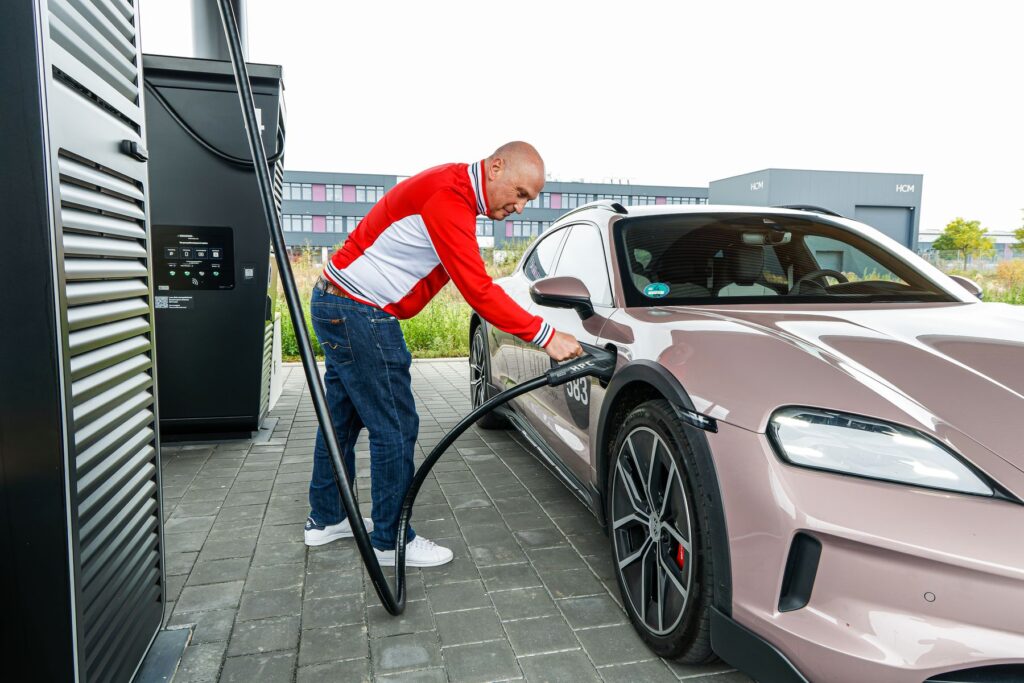
While the Taycan refueled at a rapid 318 kW, we mapped out our next steps. Würzburg was 190 kilometers away, with only four charging stalls available. With six cars in the race, time was of the essence. We pulled the plug at 75% and hit the road. Our plan worked; we reached Würzburg right behind the lead team from Sweden. Immediately, we plugged in with 9% remaining as the other cars arrived and scrambled for their slots.
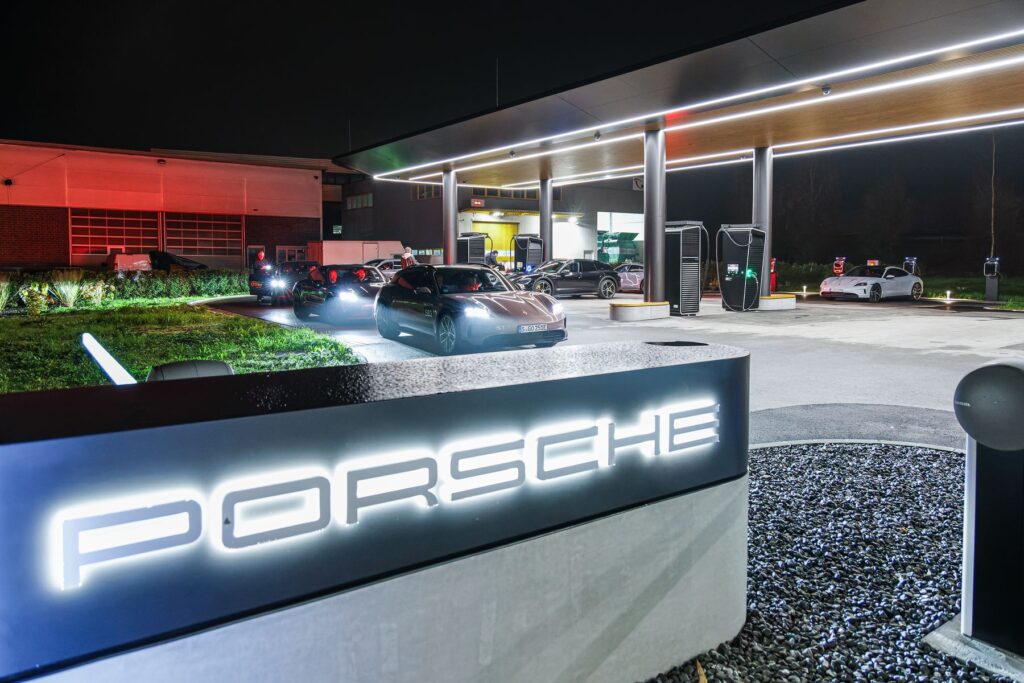
Our Taycan hit an impressive peak of 320 kW, matching Porsche’s maximum charge rate. With a few hundred kilometers under our belts, we decided to charge slightly more than before to maintain a higher speed. Once we hit 79%, we set off and passed the others, arriving in Ingolstadt first.
The Final Stretch
The last leg presented another strategic challenge. Getting stuck in Munich’s notorious traffic could ruin our lead. Should we detour on the A8 and cut back on the A7? The Swedish team took that option, but we stuck to the direct route. Our reasoning factored in the time of day, hoping to miss the worst of Munich’s rush hour. With only minor slowdowns, we reached the finish line in Koblach first.
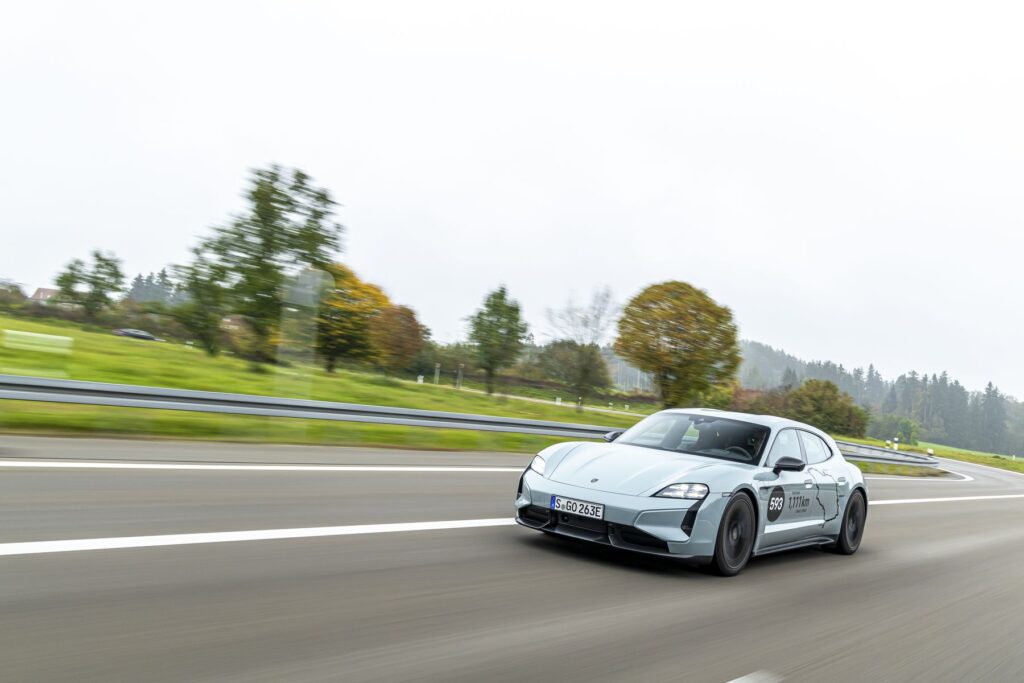
In 10 hours and 45 minutes, we completed the 1,111 km course and clinched the fastest time out of 18 teams across three days. Our Taycan averaged 25.5 kWh/100 km, and after 53 minutes of charging, we’d added a total of 315 kWh to the battery for a final cost of €123. The Porsche Taycan Cross Turismo 4S proved itself not only as a high-performance EV but as a long-distance cruiser. With superb power, a hydraulic suspension, and exceptionally comfortable sport seats, range anxiety wasn’t an issue. For this Taycan, confidence on the open road comes standard.
